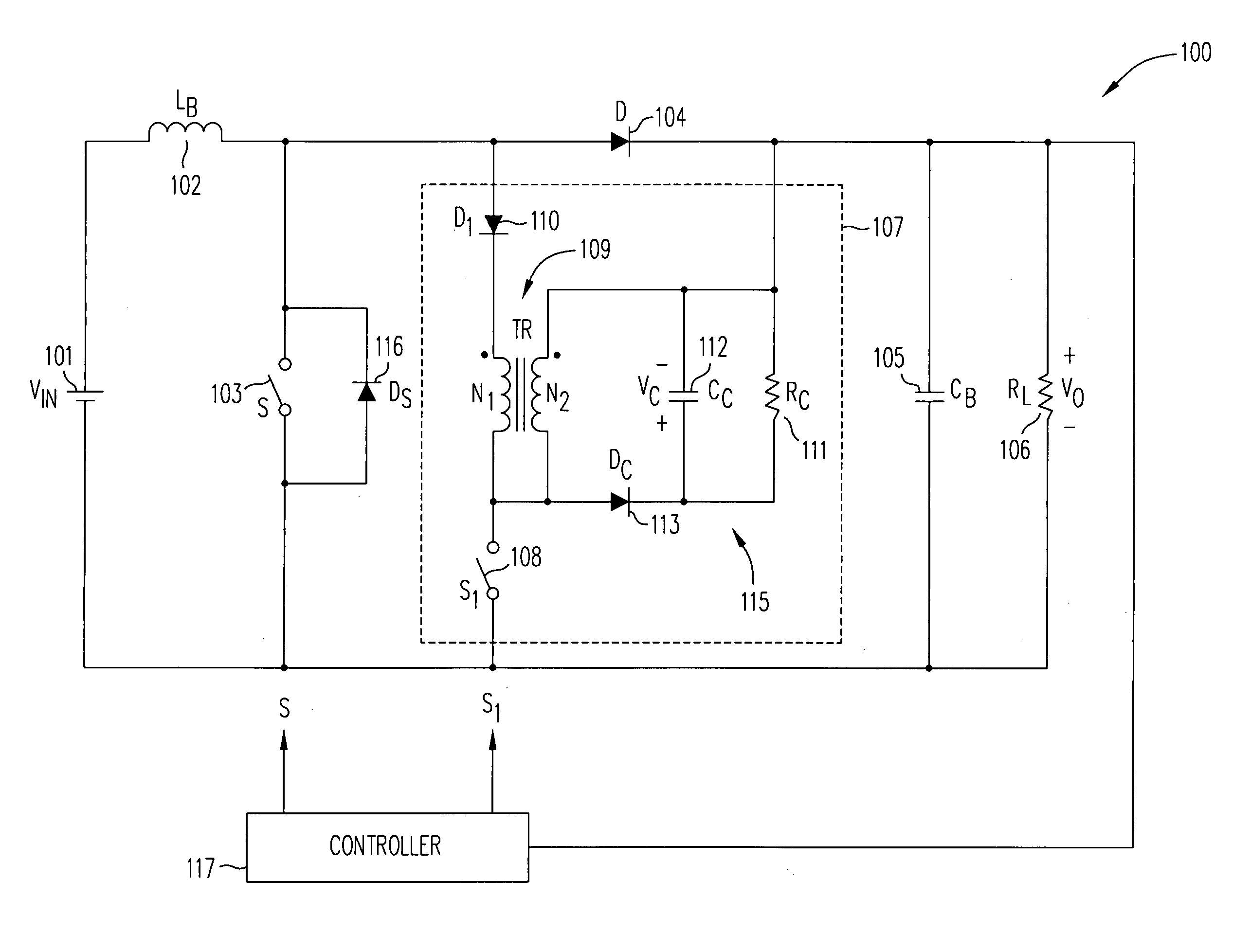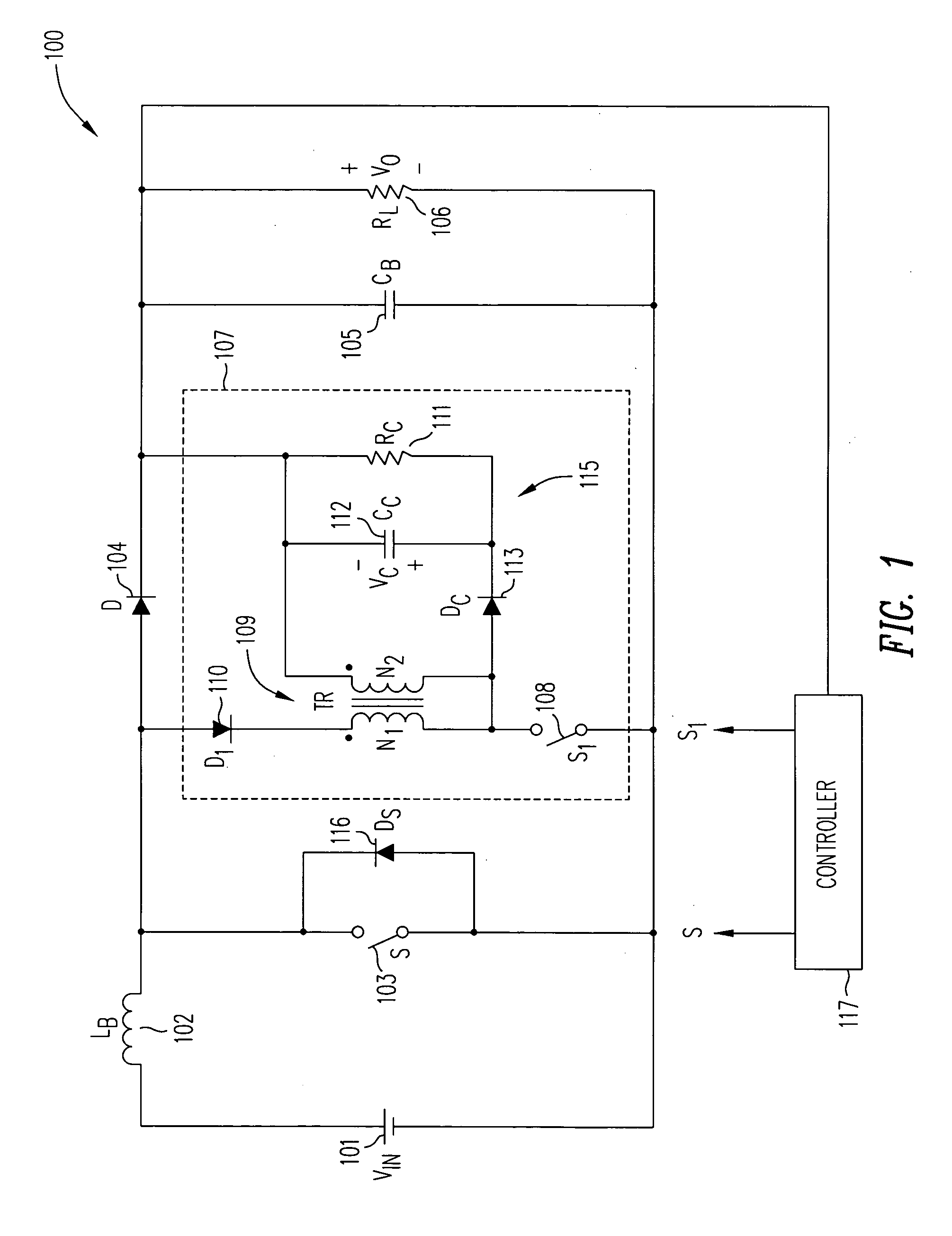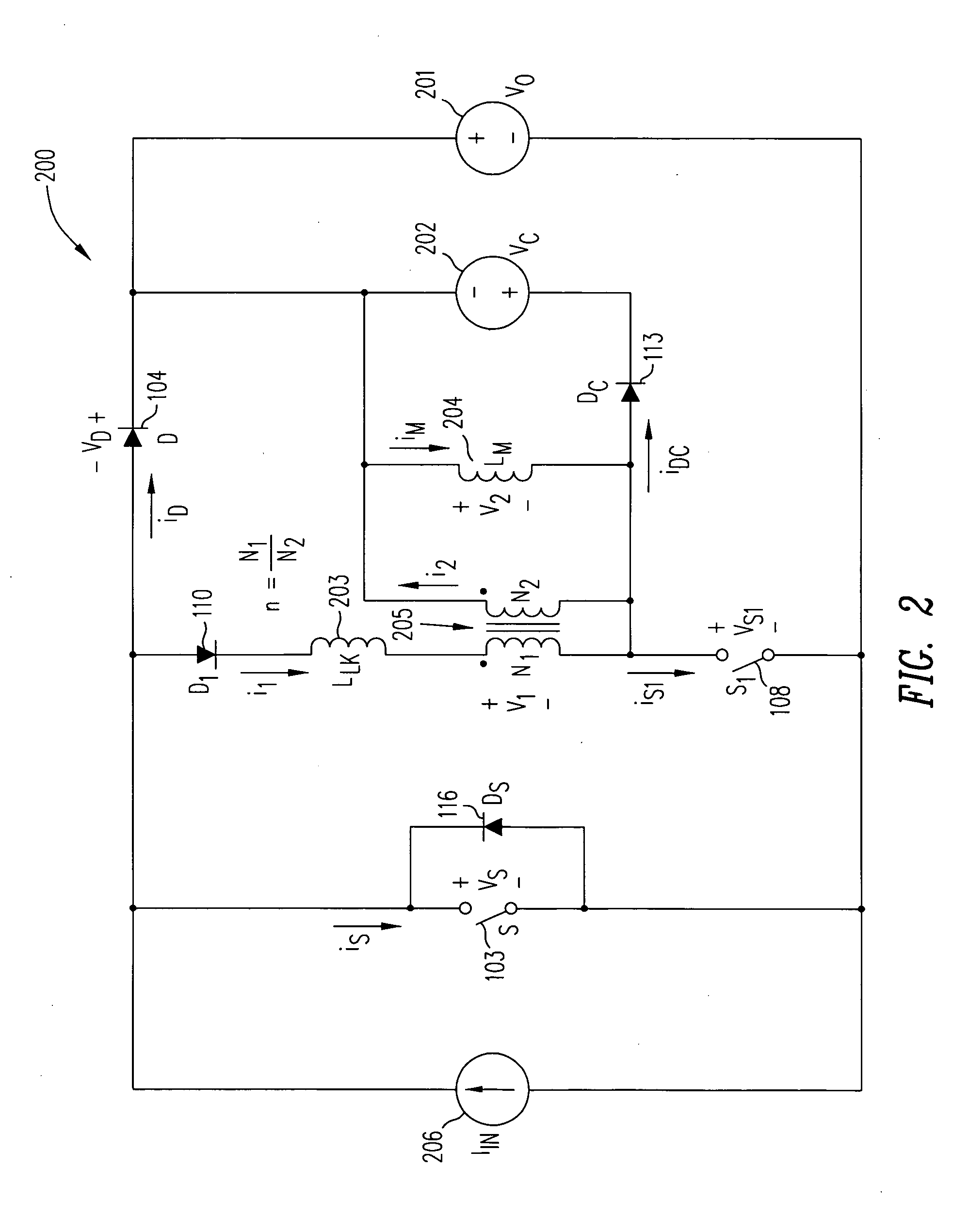Soft-switched power converters
a power converter and soft-switch technology, applied in the direction of electric variable regulation, process and machine control, instruments, etc., can solve the problems of increased component stress, inability to use, and inability to achieve high-performance pfc circuit applications, so as to achieve the effect of reducing switching losses and beneficial effects on conversion efficiency and emc performan
- Summary
- Abstract
- Description
- Claims
- Application Information
AI Technical Summary
Benefits of technology
Problems solved by technology
Method used
Image
Examples
Embodiment Construction
[0037]FIG. 1 shows soft-switched boost circuit 100, in accordance with one embodiment of the present invention. Soft-switched boost circuit 100 includes voltage source 101 representing input voltage VIN, boost inductor 102 (inductance value LB), boost switch 103, boost rectifier 104, energy-storage capacitor 105 (capacitance value CB), load 106 (resistance value RL), and active snubber circuit 107 formed by auxiliary switch 108, transformer 109, blocking diode 110, and clamp circuit 115 formed by resistor 111 (resistance value RC), clamp capacitor 112 (capacitance value CC) and diode 113. To facilitate explanation of circuit operation in soft-switched boost circuit 100, FIG. 2 provides simplified circuit model 200 for soft-switch boost circuit 100, with voltage and current reference directions indicated.
[0038] In FIG. 2, voltage sources 201 and 202 model energy-storage capacitor 105 and clamp capacitor 112, respectively, by assuming that the capacitance value CB of energy-storage c...
PUM
 Login to View More
Login to View More Abstract
Description
Claims
Application Information
 Login to View More
Login to View More - R&D
- Intellectual Property
- Life Sciences
- Materials
- Tech Scout
- Unparalleled Data Quality
- Higher Quality Content
- 60% Fewer Hallucinations
Browse by: Latest US Patents, China's latest patents, Technical Efficacy Thesaurus, Application Domain, Technology Topic, Popular Technical Reports.
© 2025 PatSnap. All rights reserved.Legal|Privacy policy|Modern Slavery Act Transparency Statement|Sitemap|About US| Contact US: help@patsnap.com



